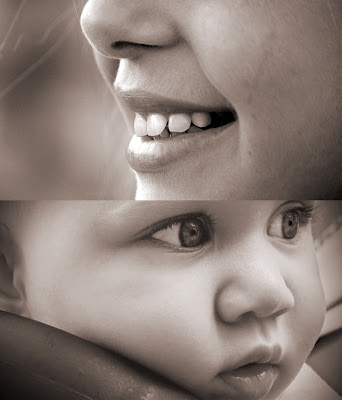Thursday, April 27, 2017
Mastercard testing new biometric bankcard with fingerprint reader
Mastercard has been testing a new biometric bankcard with embedded fingerprint reader in South Africa. Expansion of the testing to Europe and Asia Pacific is planned over the next few months, with a rollout to the United States expected by the end of 2017.
The new biometric bankcard is easy to use; one simply holds the card by the sensor and inserts it into the card reader. The biometric bankcard will work with existing payment terminals. As a back-up, if the card terminal has trouble reading the fingerprint, the user will be asked to enter a pin number after a slight delay.
Fingerprint biometrics add an additional layer of security. Pin numbers are often poorly chosen (1-2-3-4), forgotten, or easily observed and stolen. While there are 10,000 4-digit pin combinations, the probability of two people having a matching print is much smaller, 1 in 50,000.
Mastercard also plans to introduce a contactless version of its biometric bankcard. Contactless technology is currently widespread in Europe. While fast and convenient, it is less secure as there’s usually no authentication check. Because of this, purchases are limited in dollar amount.
Previously Mastercard rolled out its Mastercard Identity Check program, allowing technology enabled mobile users to authenticate purchases with iris scanning technology, commonly known as “Selfie Pay.”
MasterCard trials biometric bankcard with embedded fingerprint reader
Natasha Lomas, April 20, 2017, article for TechCrunch
Never forget your PIN again: Mastercard creates credit card with fingerprint scanner
James Titcomb, April 20, 2017, article for The Telepgraph, UK
Thursday, April 20, 2017
Facial biometrics will help prevent cheating in Chinese marathons
Marathon running has soared in popularity in China. With the increase in runners and marathons, there has been also been an increase in reports of cheating, prompting new security measures.
Marathon race participation has grown along with the rise of China’s middle class, as more Chinese aspire to a healthy lifestyle. The Chinese Athletic Association (CAA) registered a total of 328 marathon events in 2016, which is double that of the previous year.
One motive for the increase in cheating is the prizes awarded at many of the marathons. Another reason is more subtle – the pressure to have great results to post on social media.
A bold form of cheating is bib switching with unregistered participants or ringers. In a race in Shenzhen last December, two female participants had their results cancelled when it was discovered that male ringers had run in their places.
China is starting to use facial recognition scanning to crack down on the cheating. For the Beijing half marathon that just ran, 20,000 people will have been required to have their biometrics captured before the race. As of this post, there are no updates on the biometric security program, but it’s likely biometric security is a trend that will grow along with the popularity of this sport.
Beijing marathon to use facial recognition in cheating crackdown
Neil Connor, April 13, 2017 , article for The Telepgraph, UK
(additional reporting by Christine Wei)
Runners from around the world are flocking to marathons hosted by China’s most toxic cities
Echo Huang, April 12, 2017, article on Quartz website
Wednesday, April 12, 2017
Can Your Lips Reveal your Identity?
Establishing a person’s identity is a main concern of forensic investigators, and India’s Forensic Science Laboratories often field questions about the parentage of children. While DNA testing is reliable and trusted, a simpler, less costly primary test is desired. New research is intriguing.
Dr. Anshika Dube, of the Institute of Forensic Science at Gujarat Forensic Sciences University, has conducted an exploratory study of the relationship between gender and genetic factors in rugoscopy (the study of the hard tissue patterns of the mouth’s palate), chieloscopy (the study of lip pattens), and dactyloscopy (the study of fingerprints).
The findings have been promising, showing a strong correlation between parents and children. The rugoscopy results showed a 71.4% correlation between mother and daughter, and 66.7% between father and son. Chieloscopy results showed a nearly 100% correlation between mother and daughter, and father and son. Of the two, rugoscopy may end up being more useful, as the hard palate is less likely to be changed by damage from injury.
Hard palate patterning or lip prints may end up becoming tools to provide an initial test to identify the family lineage of a missing person. They may also become another tool to help forensic investigators identify suspects. Research is ongoing.
Lips can reveal your identity
Parth Shastri | The Times of India | City News|Ahmedabad News | April 10, 2017
Thursday, April 6, 2017
New Low Cost 3D Contactless Fingerprinting System
Advances in 3D fingerprint scanning technology are giving rise to smaller, more affordable 3D contactless fingerprinting systems. A team at Hong Kong Polytechnic University (PolyU) has developed a new desktop system for 3D fingerprint identification with high accuracy, quick processing (about 2 seconds), and comparatively low cost (up to $780) compared to current commercially used 3D systems.
2D fingerprinting, the current standard, is subject to a certain degree of inaccuracy due to partial prints or distortion from blurring or smearing that can occur when fingers are pressed against a hard surface like paper or a scanner screen. That problem is eliminated with 3D contactless fingerprinting. PolyU’s contactless printing technology has developed to a measured 97% accuracy with prints scanned without the closeness of touch.
Minutiae (specific points in a fingerprint) features such as ridge edges and bifurcation (where a ridge splits into two) are the most universally recognized fingerprint details. About 40 to 45 minutiae points can be recovered from an average fingerprint scan. The more minutiae points that are matched, the higher the confidence and reliability of the match. With 3D fingerprinting technology, more information is captured, allowing a more accurate representation of a fingerprint, and a higher certainty in matching.
More accuracy, more portability and more affordability in 3D contactless fingerprint identification systems will provide a boon to law enforcement agencies, forensics, secure access, and border and travel security.
A new 3D fingerprint identification system developed
Published by By BioSpectrum Bureau, April 3, 2017
Subscribe to:
Comments (Atom)



